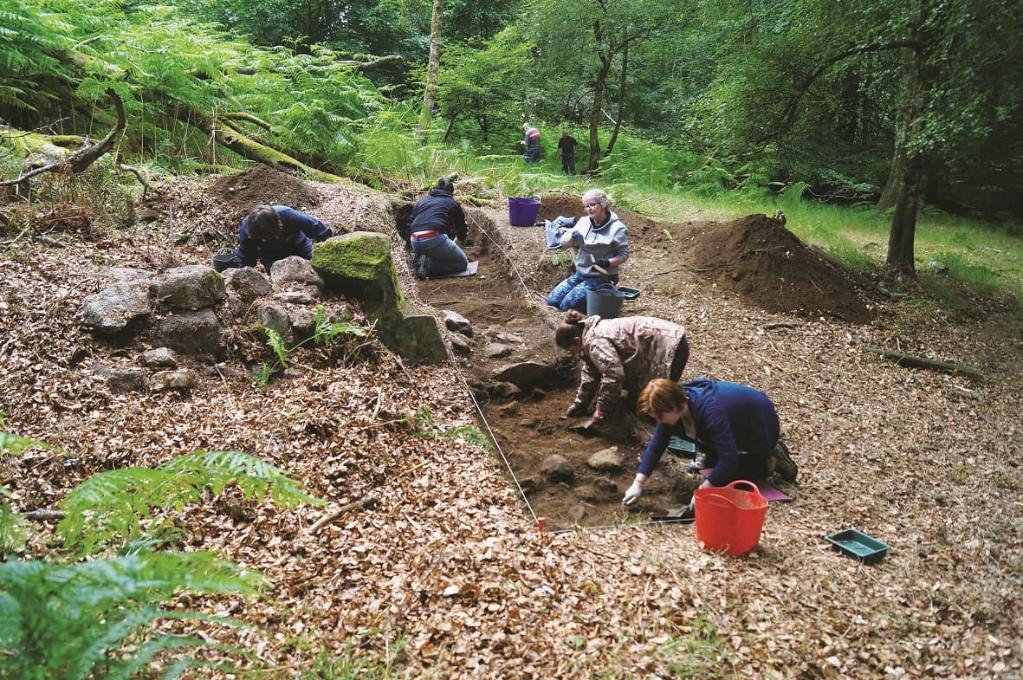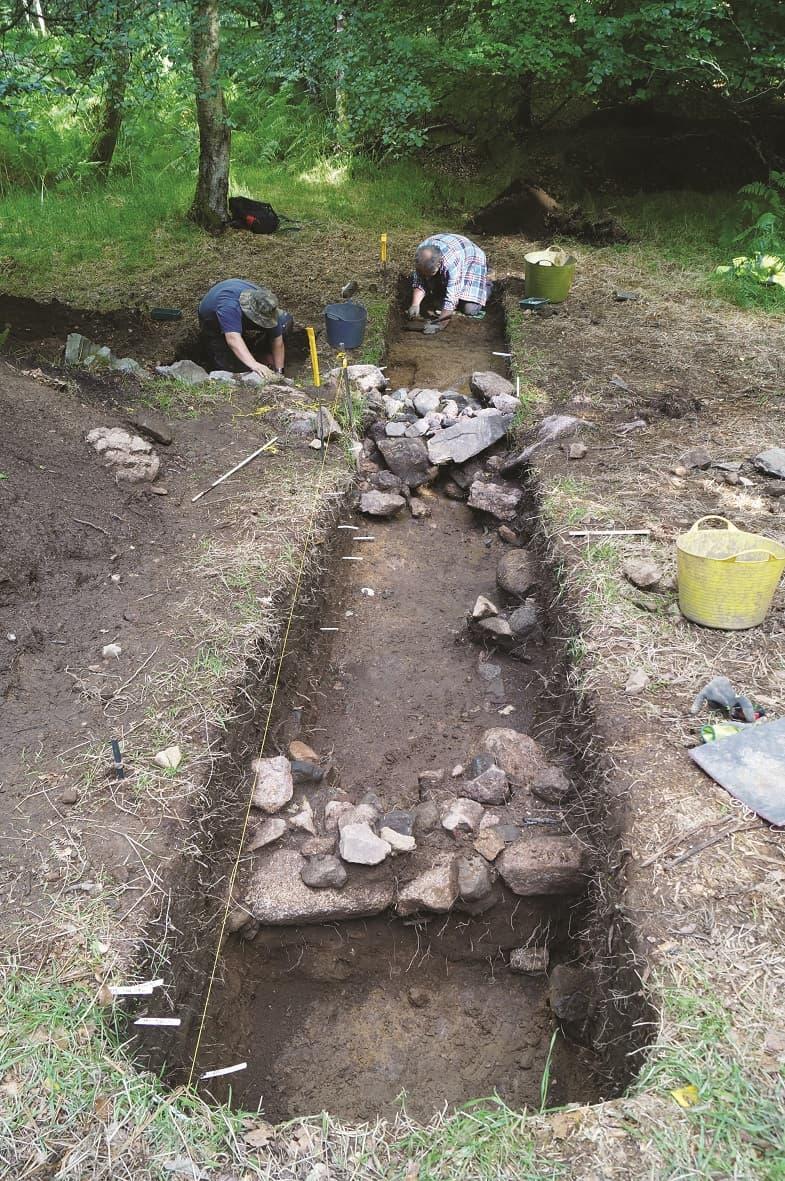Pittodrie Excavations
Pittodrie Estate Excavations, 2021
A third year of community-run excavations on the Pittodrie Estate were carried out on consecutive weeks in July and August. These excavations form part of the Bennachie Landscapes Project, organised by the Bailies of Bennachie and the University of Aberdeen. Trenches were organised to interrogate parts of a multi-period relict landscape preserved within the wooded policies of Pittodrie Castle that were planted in the early 19th century. This year’s work built upon excavations carried out in 2019.
Two distinct zones were targeted: a large rectilinear enclosure of unusual form and an earthwork feature sitting upon a mound and overlooking the enclosure. It is not known whether these features are contemporary, though it was hoped that this year’s excavations may have provided dating evidence to test that possibility.
The rectilinear enclosure is delineated by a substantial stone dyke that has been heavily robbed in the past. However, beneath the turf covering, a few courses of stonework survive fairly well. The base of the dyke is formed of very large boulders that appear to relate to initial ground-clearance of the site. Statigraphic evidence from the soil profiles suggests the dyke may have been rebuilt at some point and one trench revealed an internal structure. However, this internal stone-built structure appears to have predated the construction of the enclosure itself. A piece of charcoal sealed by this former structure has been sent for C14 analysis. Outside the enclosure, in ground still containing rig and furrow, thin, shallow grooves cut into the natural may be plough marks. However, if this is the case, they run at a very oblique angle to the present rigs and would appear to pre-date them.
On the mound, a larger area than that dug in 2019 was uncovered in order to try to find any structure associated with the charcoal discovered in the original trial trench. This charcoal has been carbon dated to the 10th century. This year two foundation trenches were discovered, the wider containing in situ wall remains bonded with clay. Also within this trench were the remains of what appeared to be a burnt, roof-supporting timber post. The second, narrower, foundation trench ran at right angles to the former. Two samples of charcoal have been sent for C14 dating in order to try to date these features. The structure appears to have been robbed for its stone, possibly during the early modern period as a quarry for the extant drystane dykes surrounding the present policies.
Within the stone footing remains were four pieces of worked stone and an engraving made on a local slate-like material. The engraving appears to show concentric circles with radiating lines and is just one portion of a larger piece - the other part of which was not recovered. Consideration of its possible date and purpose is still ongoing. The four pieces of worked masonry appear anomalous in a 10th-century context, so the carbon dates are eagerly awaited.
A further earthwork was also investigated at the foot of the mound. This appears to have formed a concentric enclosure around at least a part of the base of the mound but had also been heavily robbed. A possible basal layer of stones suggests the line of its inner face.
Grateful thanks are extended to Macdonald Hotels, the owners of the land, for permission to excavate and to Damian Lapeta the estate manager for all his help in making the project run smoothly. Especial thanks are also due to Bruce Mann and Aberdeenshire Council for funding the C14 analyses and to the volunteers whose hard work enabled such a rewarding venture
Volunteers wishing to help with the excavations are welcome to find out more by contacting: info@bailiesofbennachie.co.uk.
Pittodrie Estate Interim Report Summer 2019 (PDF)

